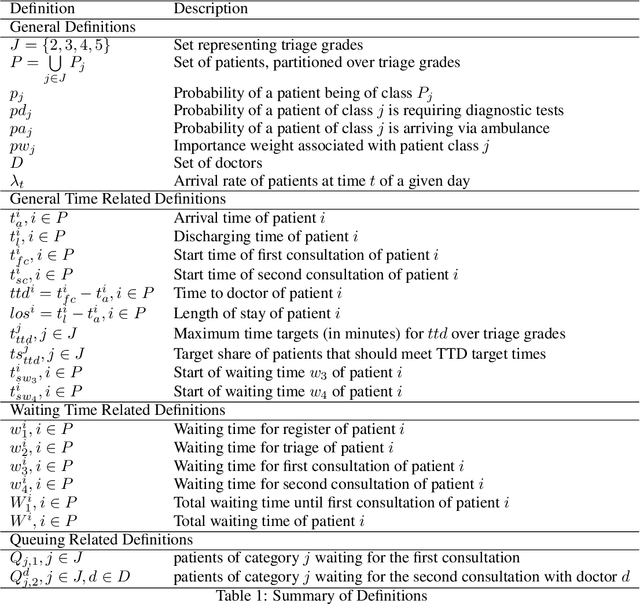Melanie Reuter-Oppermann
Integrated Planning in Hospitals: A Review
Jul 11, 2023Abstract:Efficient planning of scarce resources in hospitals is a challenging task for which a large variety of Operations Research and Management Science approaches have been developed since the 1950s. While efficient planning of single resources such as operating rooms, beds, or specific types of staff can already lead to enormous efficiency gains, integrated planning of several resources has been shown to hold even greater potential, and a large number of integrated planning approaches have been presented in the literature over the past decades. This paper provides the first literature review that focuses specifically on the Operations Research and Management Science literature related to integrated planning of different resources in hospitals. We collect the relevant literature and analyze it regarding different aspects such as uncertainty modeling and the use of real-life data. Several cross comparisons reveal interesting insights concerning, e.g., relations between the modeling and solution methods used and the practical implementation of the approaches developed. Moreover, we provide a high-level taxonomy for classifying different resource-focused integration approaches and point out gaps in the literature as well as promising directions for future research.
Machine learning-based patient selection in an emergency department
Jun 08, 2022



Abstract:The performance of Emergency Departments (EDs) is of great importance for any health care system, as they serve as the entry point for many patients. However, among other factors, the variability of patient acuity levels and corresponding treatment requirements of patients visiting EDs imposes significant challenges on decision makers. Balancing waiting times of patients to be first seen by a physician with the overall length of stay over all acuity levels is crucial to maintain an acceptable level of operational performance for all patients. To address those requirements when assigning idle resources to patients, several methods have been proposed in the past, including the Accumulated Priority Queuing (APQ) method. The APQ method linearly assigns priority scores to patients with respect to their time in the system and acuity level. Hence, selection decisions are based on a simple system representation that is used as an input for a selection function. This paper investigates the potential of an Machine Learning (ML) based patient selection method. It assumes that for a large set of training data, including a multitude of different system states, (near) optimal assignments can be computed by a (heuristic) optimizer, with respect to a chosen performance metric, and aims to imitate such optimal behavior when applied to new situations. Thereby, it incorporates a comprehensive state representation of the system and a complex non-linear selection function. The motivation for the proposed approach is that high quality selection decisions may depend on a variety of factors describing the current state of the ED, not limited to waiting times, which can be captured and utilized by the ML model. Results show that the proposed method significantly outperforms the APQ method for a majority of evaluated settings
 Add to Chrome
Add to Chrome Add to Firefox
Add to Firefox Add to Edge
Add to Edge